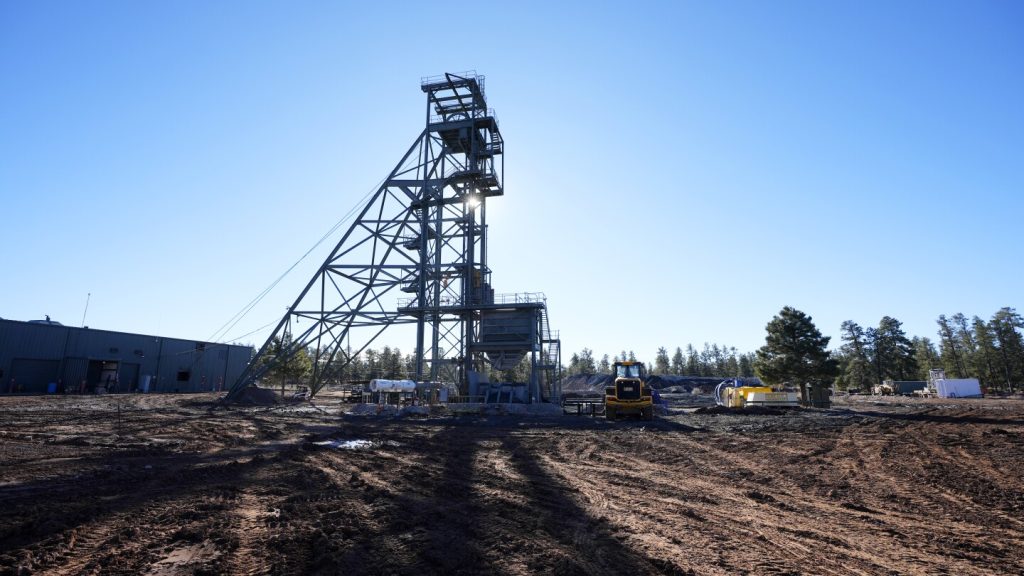The largest uranium producer in the United States is increasing its efforts just south of Grand Canyon National Park, a project that has been inactive since the 1980s. As global demand for uranium rises, the Biden administration and other countries are committed to expanding nuclear power to combat climate change. However, environmentalists and Native American leaders voice concerns about the impact of uranium mining on nearby communities and demand better regulatory oversight due to the historical legacy of contamination and harm caused by past uranium mining efforts.
The new mining at Pinyon Plain Mine near the Grand Canyon’s South Rim entrance is taking place within the boundaries of a newly designated national monument. Energy Fuels Inc., the company behind the project, assures that the mining operation will have low impact and poses zero risk to groundwater. The mine will cover a small area and operate for three to six years, producing a significant amount of uranium to meet growing demand for domestically sourced uranium. The ore extracted from the mine will be transported to Energy Fuels’ mill in Utah, the only one of its kind in the U.S.
A coalition of Native Americans has raised concerns about the mining project and its potential impact on sacred lands and water sources. The Havasupai Tribe, whose reservation lies near the Grand Canyon, has expressed fears about the mining operation compromising their most sacred spots and water supplies. Despite legal challenges and pleas from tribal communities, the courts have rejected attempts to stop the mining, and federal officials have been hesitant to intervene beyond general efforts to improve consultation with Native American tribes.
The Biden administration’s support for nuclear power as a means to reduce emissions and combat climate change has sparked debate over the environmental implications of uranium mining near the Grand Canyon. While proponents argue for the necessity of domestic uranium production for national security and energy needs, opponents point to the historical legacy of contamination and harm caused by uranium mining in the past. Tribal communities with a history of suffering from the consequences of uranium mining remain skeptical of the government and industry promises of safe and responsible operations.
The ongoing battle over energy development and sacred lands highlights the complex relationship between environmental concerns, national security interests, and economic factors. The uranium mining project near the Grand Canyon represents a larger debate about the Biden administration’s environmental policies and commitment to environmental justice. As the U.S. seeks to expand its nuclear power capacity, the tensions between environmental protection, indigenous rights, and energy security continue to shape the discussion around uranium mining in the region.
The uranium mining project near the Grand Canyon serves as a focal point for broader discussions about the role of nuclear power, environmental justice, and tribal sovereignty in the U.S. energy landscape. The conflicting interests and concerns of various stakeholders highlight the challenges of balancing economic development, energy security, and environmental protection in a rapidly changing global climate. As the demand for uranium continues to rise, the debate over the impacts of uranium mining on communities and ecosystems intensifies, prompting calls for increased transparency, accountability, and respect for indigenous rights in resource extraction projects.


